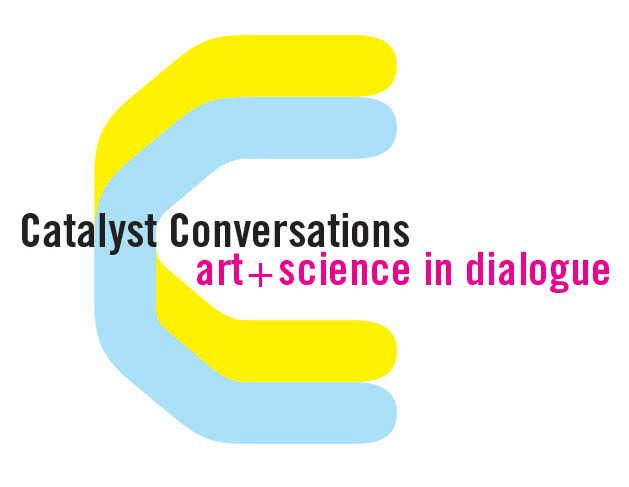|
Catalyst to Go brings Catalyst Conversations' unique perspective on the intersection of art and science to communities outside of metro Boston. This Catalyst To Go event is part of the programming for The Moon: Eternal Pearl on view March 28 – May 1, 2019. Ticket sales support the work of Concord Art.
.jpg)
The fifth largest moon in the solar system, Earth's moon is the only place beyond Earth where humans have set foot. The brightest and largest object in our night sky, the moon makes Earth a more livable planet by moderating our home planet's wobble on its axis, leading to a relatively stable climate. It also causes tides, creating a rhythm that has guided humans for thousands of years. nasa.gov
We earth dwellers are always in relationship to the moon. In Sharon Harper’smultiple-exposure photographs from the series Moon Studies and Star Scratches, the camera maps a relationship between the movement of the earth, the photographer and the camera. These images are an attempt to record a realm we can hardly fathom, but within a framework of time we can readily understand, bringing the human scale into relationship with the cosmic. For Yaray Ku it is important to understand the formation of our Moon since the same formation scenario is likely to occur very often in the early solar system. The leading hypothesis, The Giant Impact, fulfills many physical constraints on the Moon size, angular momentum, and small lunar core. However, in terms of isotopes, there are a lot of unsolved problems to explain the similarity between Earth and Moon given that the latter is expected to have different isotopic composition from the Earth. Ku’s research measures the isotopic composition of both Earth and Moon. Harper and Ku will present their particular projects and discuss with each other how they in their respective fields, explore meaning from observation of phenomena on and beyond the Earth (the Moon) and how meaning is brought back to this sphere.
Since its founding in 1917, the Concord Art has promoted and advanced contemporary art through exhibitions, lectures, workshops and classes. It also maintains a small permanent collection of art produced by leading early 20th century artists. Free and open to the public. Gallery hours are Tuesday–Saturday 10:00am–4:30pm; Sunday 12:00pm–4:00pm. www.concordart.org
Image credit: Sharon Harper
Moon Studies and Star Scratches, No. 4 (detail)
June - September 2004
Saratoga Springs, New York; Middlesex, Vermont;
Johnson, Vermont; Eden Mills, Vermont; Greensboro, North Carolina
Digital c print from 8x10 transparency, 40” x 50”
Sharon Harper received an MFA in photography and related media from the School of Visual Art in New York. Her work explores the intersection of technology and perception. It is in permanent collections at the Museum of Modern Art, New York, the Whitney Museum of American Art, The Museum of Fine Art, Houston, The Albright-Knox Art Gallery in Buffalo, and the Harvard Art Museums, the Nelson-Atkins Museum in Kansas City, Missouri, and the New York Public Library among other collections. She has received and attended numerous artist residency fellowships including Yaddo, MacDowell Colony, Headlands Center for the Arts, Ucross Foundation, Virginia Center for the Creative Arts, Leighton Residencies, Banff Centre. She is a 2013 recipient of a John Simon Guggenheim Memorial Foundation in Photography. She is currently a Professor of Visual and Environmental Studies at Harvard University.
Yaray Ku is a PhD candidate at Dept. of Earth and Planetary Science at Harvard. She studied geology at university in Taiwan and moved to the United States to study the Moon formation. Her studies focus on the geology of Moon and analyze the isotopic compositions of lunar rocks to understand the formation of Moon. She is very active as a volunteer for Harvard Museum events, such as I Heart Science, and the coming celebration of the 50th anniversary of the 1969 human landing on Moon. She was recently awarded with Q Awards for distinction and excellence in teaching at Harvard University. She enjoys connecting her research to what people want to learn about in the museum and public events, acting as a bridge between my specific knowledge, and the public’s curiosity, hopefully inspiring the next generation of young scientists.
|